In Pictures: Stockholm's iconic Vasa warship up close

A new exhibition at Stockholm's Vasa Museum explores the 17th century ship's role both as a warship and a form of propaganda. The Local visited the museum ahead of the February 8th exhibition opening.
The military expansionist ambitions for the ship never saw fruition. Instead, it ended up on the bottom of the Stockholm harbour, its design inherently flawed.
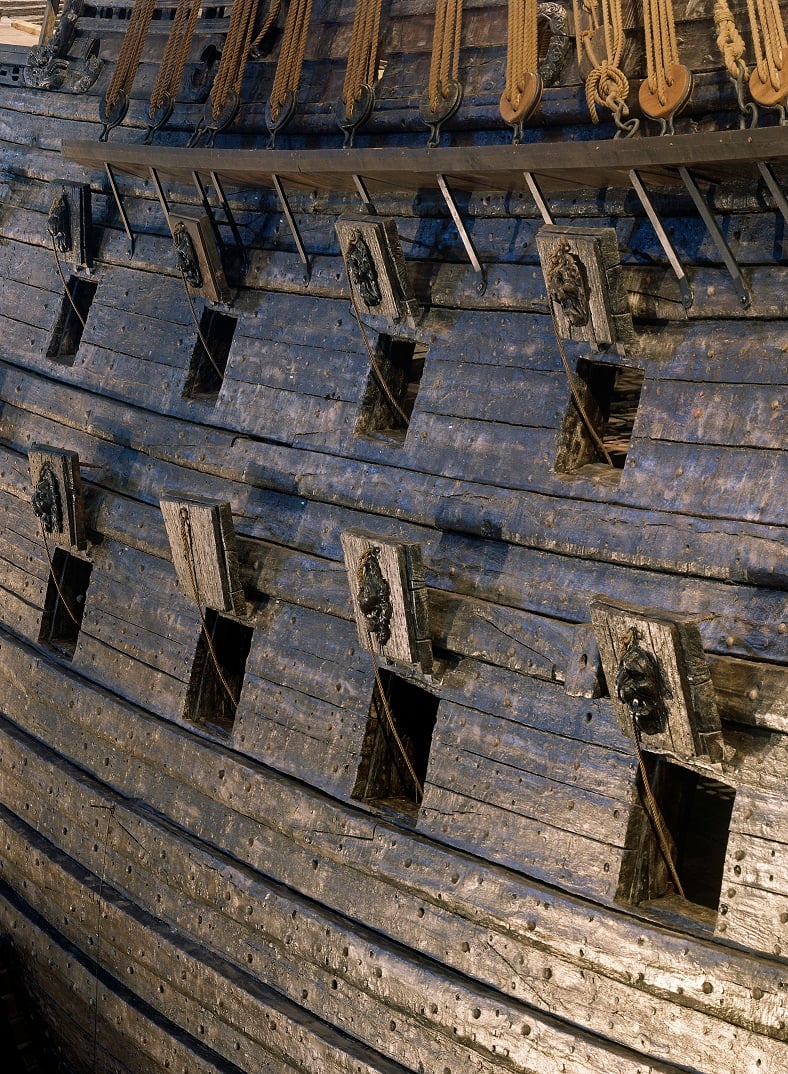 The gun ports of the 'Vasa'. When sailing on its maiden journey the lower gun ports were open, as they had fired a salute, and a gust of wind tilted the ship so that water flowed into the interior of the ship. Photo: Åke E:son Lindman.
As a gust of wind fatally tilted the ship – and water gushed in through the lower gun ports – it foundered and sunk during its maiden journey.
The gun ports of the 'Vasa'. When sailing on its maiden journey the lower gun ports were open, as they had fired a salute, and a gust of wind tilted the ship so that water flowed into the interior of the ship. Photo: Åke E:son Lindman.
As a gust of wind fatally tilted the ship – and water gushed in through the lower gun ports – it foundered and sunk during its maiden journey.
 The Vasa from above. The ship can be viewed in its entirety from four different levels of the museum. Photo: Anneli Karlsson, Vasamuseet/SMTM
Anna Maria Forssberg, a historian and researcher at the museum, explains that the main purpose of the ship was to signal to the world the superiority of the Swedish empire.
"The sculptures told the story about the powerful king Gustavus Adolphus and that he was the rightful ruler of Sweden. That was his main message, that he had gotten his power from his father, from god and from the people. He was in war with his cousin Sigmund of Poland, who had a rightful claim to the Swedish throne because Gustavus' father had deposed Sigmund," she tells The Local.
The Vasa from above. The ship can be viewed in its entirety from four different levels of the museum. Photo: Anneli Karlsson, Vasamuseet/SMTM
Anna Maria Forssberg, a historian and researcher at the museum, explains that the main purpose of the ship was to signal to the world the superiority of the Swedish empire.
"The sculptures told the story about the powerful king Gustavus Adolphus and that he was the rightful ruler of Sweden. That was his main message, that he had gotten his power from his father, from god and from the people. He was in war with his cousin Sigmund of Poland, who had a rightful claim to the Swedish throne because Gustavus' father had deposed Sigmund," she tells The Local.
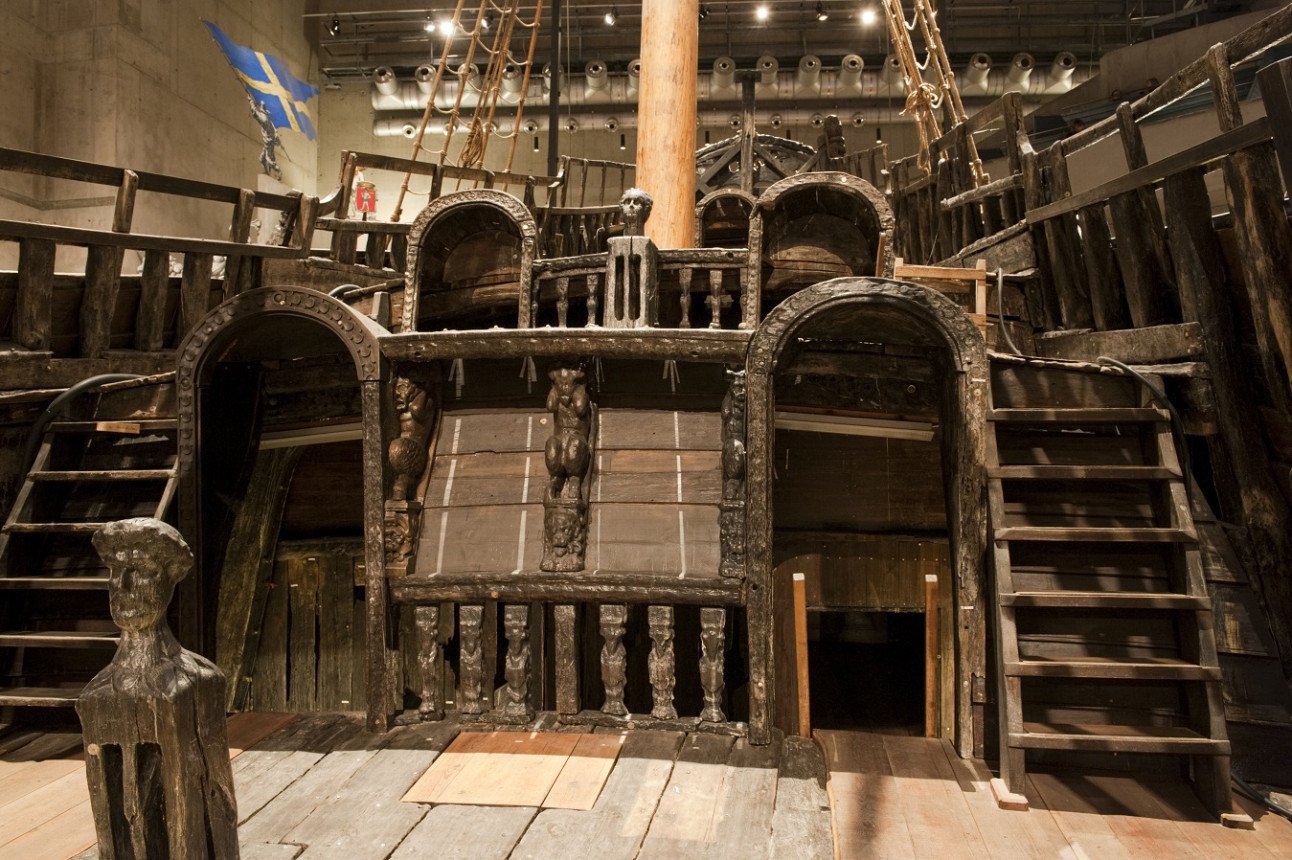
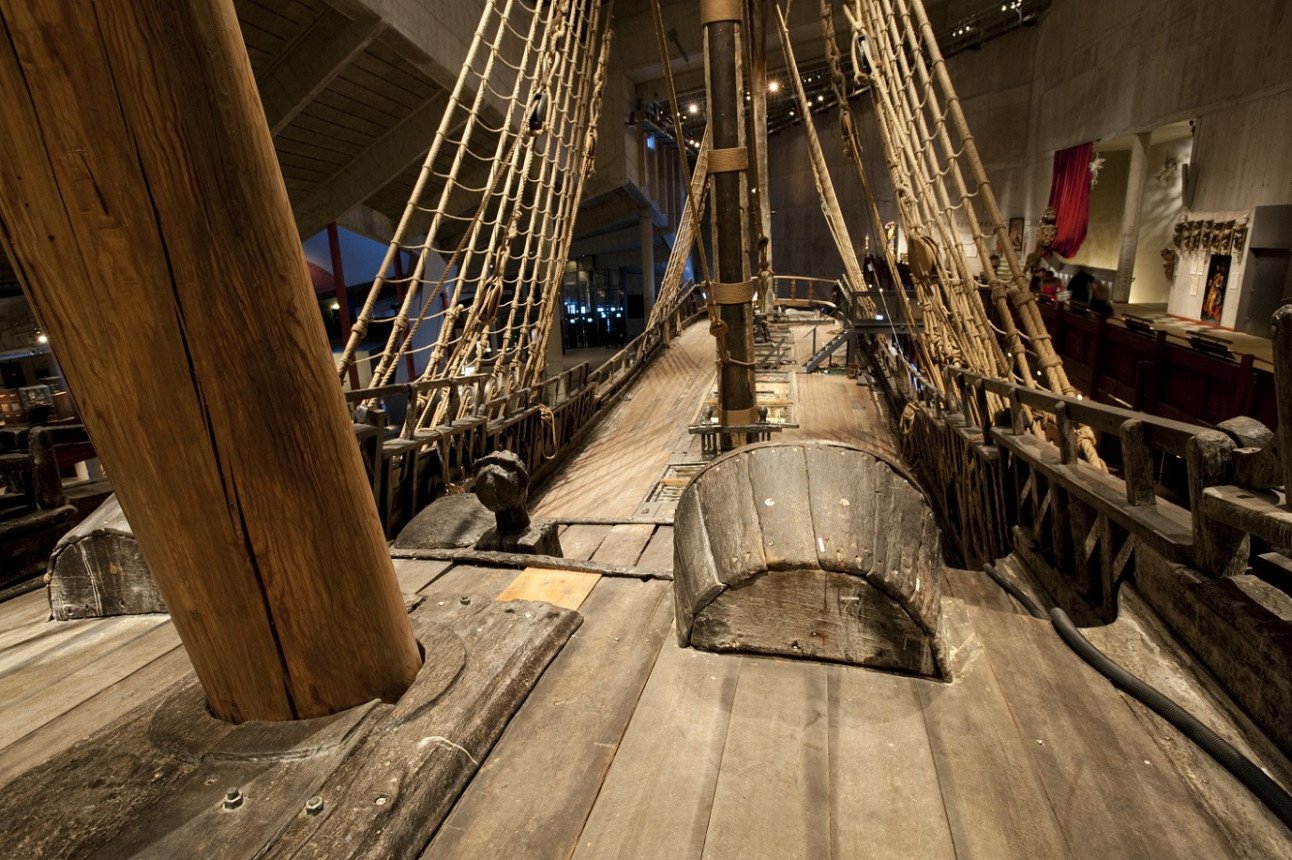 View from the deck, towards the bow and aft of 'Vasa'. It had a maximum crew of 435 men. Photos: Anneli Karlsson, Vasamuseet/SMTM
Hundreds of vibrantly coloured sculptures were intended to signal the superiority of Sweden as Gustavus Adolphus was engaged in a war with Poland in the 1620s.
These sculptures, in the original colours, are part of the new Vasa Up Close exhibition which also includes an app allowing visitors to explore the sculptures' history and message, and learn about how the Vasa was intended to work.
View from the deck, towards the bow and aft of 'Vasa'. It had a maximum crew of 435 men. Photos: Anneli Karlsson, Vasamuseet/SMTM
Hundreds of vibrantly coloured sculptures were intended to signal the superiority of Sweden as Gustavus Adolphus was engaged in a war with Poland in the 1620s.
These sculptures, in the original colours, are part of the new Vasa Up Close exhibition which also includes an app allowing visitors to explore the sculptures' history and message, and learn about how the Vasa was intended to work.
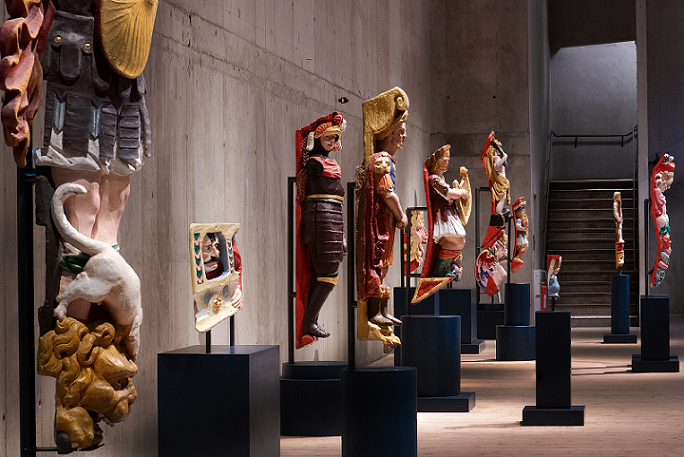 The Vasa ship was originally brightly coloured and some of the sculptures and adornments have been restored using the same pigments and colours as the original artists used. Photo: Anneli Karlsson, Vasamuseet/SMTM
"Many people, when they think of the 'Vasa', see something brown in their head. But actually, when it sailed it was bright and colourful. There were about 700 sculptures and they were painted in vivid colours and also clad with gold. So it was quite a different experience then," Forssberg says.
The Vasa ship was originally brightly coloured and some of the sculptures and adornments have been restored using the same pigments and colours as the original artists used. Photo: Anneli Karlsson, Vasamuseet/SMTM
"Many people, when they think of the 'Vasa', see something brown in their head. But actually, when it sailed it was bright and colourful. There were about 700 sculptures and they were painted in vivid colours and also clad with gold. So it was quite a different experience then," Forssberg says.
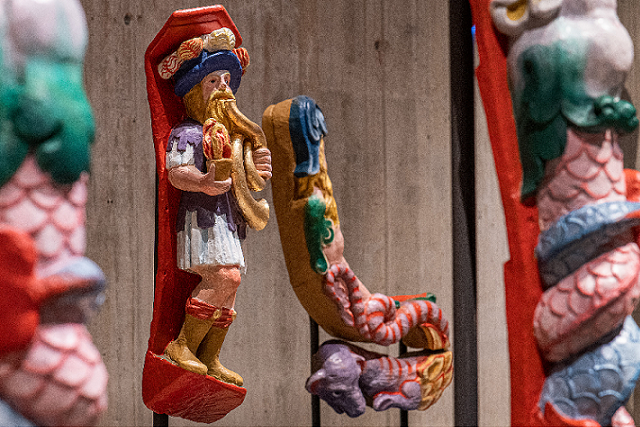 The vivid colours on the ornaments would have been seen even from a distance. Photo: Anneli Karlsson, Vasamuseet/SMTM
"The sculptures aren’t just numerous but have also lots to say. During the 17th century in Stockholm there were many nationalities but few were literate. It was important that people in other countries would be able to understand the sculptures’ message of the Swedish kings’ bravery and power." the director of the Vasa museum, Lisa Månsson, writes.
The vivid colours on the ornaments would have been seen even from a distance. Photo: Anneli Karlsson, Vasamuseet/SMTM
"The sculptures aren’t just numerous but have also lots to say. During the 17th century in Stockholm there were many nationalities but few were literate. It was important that people in other countries would be able to understand the sculptures’ message of the Swedish kings’ bravery and power." the director of the Vasa museum, Lisa Månsson, writes.
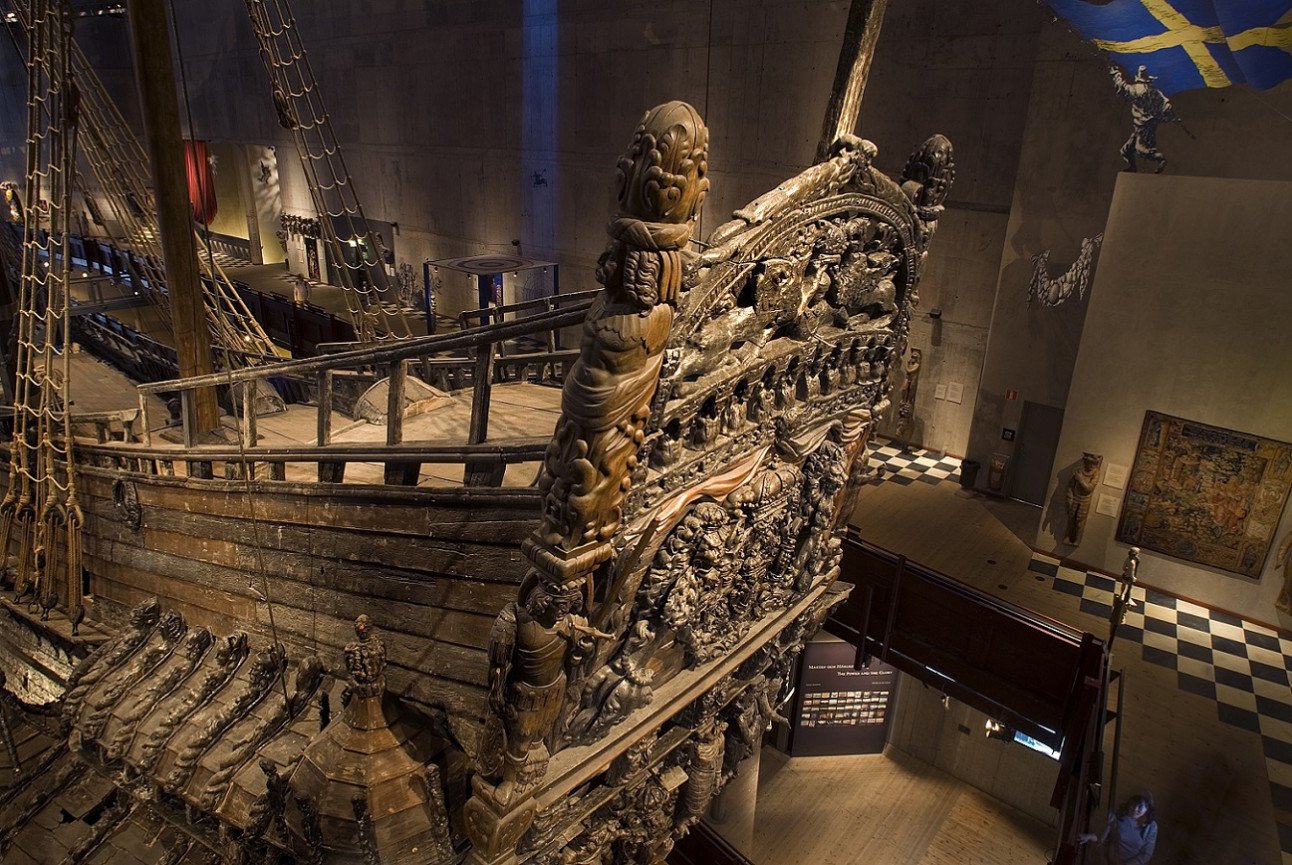 The aft of the ship tells the story of the coronation of Gustavus Adolphus. Photo: Karolina Kristensson, Vasamuseet/SMTM
The stories and motifs of the sculptures and decorations range from biblical themes and antique myths to the coronation of the Swedish king Gustavus Adolphus.
The aft of the ship tells the story of the coronation of Gustavus Adolphus. Photo: Karolina Kristensson, Vasamuseet/SMTM
The stories and motifs of the sculptures and decorations range from biblical themes and antique myths to the coronation of the Swedish king Gustavus Adolphus.
He is shown receiving the crown while leaning on people including noblemen, priests, women and peasants, a design to show that he had the support of all the people in his nation.
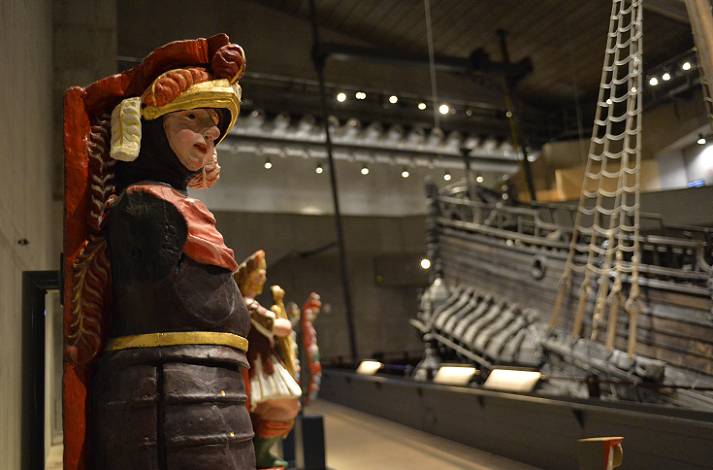 A young knight, one of more than 700 sculptures and ornaments on the Vasa. Photo: Mikael Dunker, Vasamuseet/SMTM
The Vasa Up Close exhibition, located on the museum's top two floors, is open to the public from February 8th.
A young knight, one of more than 700 sculptures and ornaments on the Vasa. Photo: Mikael Dunker, Vasamuseet/SMTM
The Vasa Up Close exhibition, located on the museum's top two floors, is open to the public from February 8th.
Comments
See Also
The military expansionist ambitions for the ship never saw fruition. Instead, it ended up on the bottom of the Stockholm harbour, its design inherently flawed.

The gun ports of the 'Vasa'. When sailing on its maiden journey the lower gun ports were open, as they had fired a salute, and a gust of wind tilted the ship so that water flowed into the interior of the ship. Photo: Åke E:son Lindman.
As a gust of wind fatally tilted the ship – and water gushed in through the lower gun ports – it foundered and sunk during its maiden journey.

The Vasa from above. The ship can be viewed in its entirety from four different levels of the museum. Photo: Anneli Karlsson, Vasamuseet/SMTM
Anna Maria Forssberg, a historian and researcher at the museum, explains that the main purpose of the ship was to signal to the world the superiority of the Swedish empire.
"The sculptures told the story about the powerful king Gustavus Adolphus and that he was the rightful ruler of Sweden. That was his main message, that he had gotten his power from his father, from god and from the people. He was in war with his cousin Sigmund of Poland, who had a rightful claim to the Swedish throne because Gustavus' father had deposed Sigmund," she tells The Local.


View from the deck, towards the bow and aft of 'Vasa'. It had a maximum crew of 435 men. Photos: Anneli Karlsson, Vasamuseet/SMTM
Hundreds of vibrantly coloured sculptures were intended to signal the superiority of Sweden as Gustavus Adolphus was engaged in a war with Poland in the 1620s.
These sculptures, in the original colours, are part of the new Vasa Up Close exhibition which also includes an app allowing visitors to explore the sculptures' history and message, and learn about how the Vasa was intended to work.

The Vasa ship was originally brightly coloured and some of the sculptures and adornments have been restored using the same pigments and colours as the original artists used. Photo: Anneli Karlsson, Vasamuseet/SMTM
"Many people, when they think of the 'Vasa', see something brown in their head. But actually, when it sailed it was bright and colourful. There were about 700 sculptures and they were painted in vivid colours and also clad with gold. So it was quite a different experience then," Forssberg says.

The vivid colours on the ornaments would have been seen even from a distance. Photo: Anneli Karlsson, Vasamuseet/SMTM
"The sculptures aren’t just numerous but have also lots to say. During the 17th century in Stockholm there were many nationalities but few were literate. It was important that people in other countries would be able to understand the sculptures’ message of the Swedish kings’ bravery and power." the director of the Vasa museum, Lisa Månsson, writes.

The aft of the ship tells the story of the coronation of Gustavus Adolphus. Photo: Karolina Kristensson, Vasamuseet/SMTM
The stories and motifs of the sculptures and decorations range from biblical themes and antique myths to the coronation of the Swedish king Gustavus Adolphus.
He is shown receiving the crown while leaning on people including noblemen, priests, women and peasants, a design to show that he had the support of all the people in his nation.

A young knight, one of more than 700 sculptures and ornaments on the Vasa. Photo: Mikael Dunker, Vasamuseet/SMTM
The Vasa Up Close exhibition, located on the museum's top two floors, is open to the public from February 8th.
Join the conversation in our comments section below. Share your own views and experience and if you have a question or suggestion for our journalists then email us at [email protected].
Please keep comments civil, constructive and on topic – and make sure to read our terms of use before getting involved.
Please log in here to leave a comment.